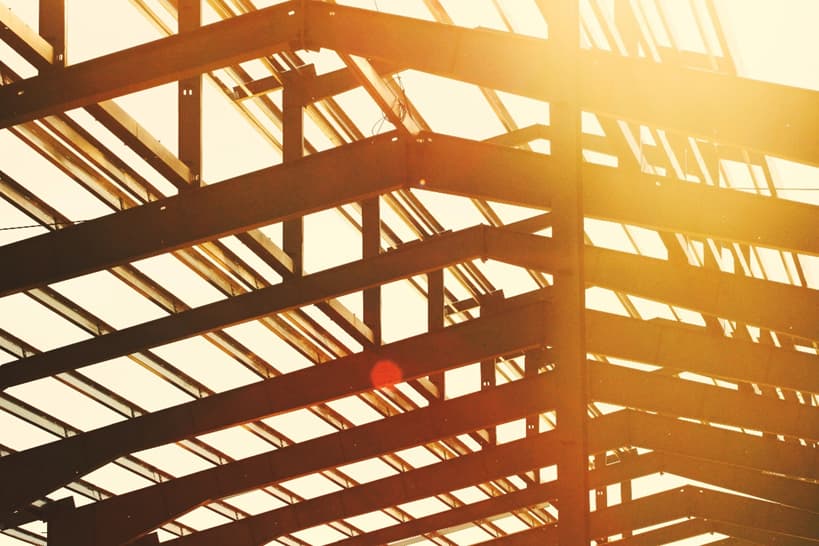Structural steel fabrication is a big concern for most of the engineering industries. When you think about the abundance of structural steel, the importance of structural steel fabrication can be easily understood. Structural steels can be defined as the ready parts that are used for construction operations. It is easy to say that structural steels have a broad range of application areas. From dams to aircraft, structural steels are preferred by engineers because of their superior mechanical properties. Everybody knows about the structural steels as they can be seen in every area of life. However, structural steel fabrication is a lesser-known subject. The vast application areas of the structural steels come with various types of fabrication processes. However, specific steps are always operated to maintain the structural steel fabrication. Fundamentally, shaping and assembly may be listed as the two basic steps for structural steel fabrication. Furthermore, complex stages of structural steel fabrication allow vendors to use them in several engineering applications.
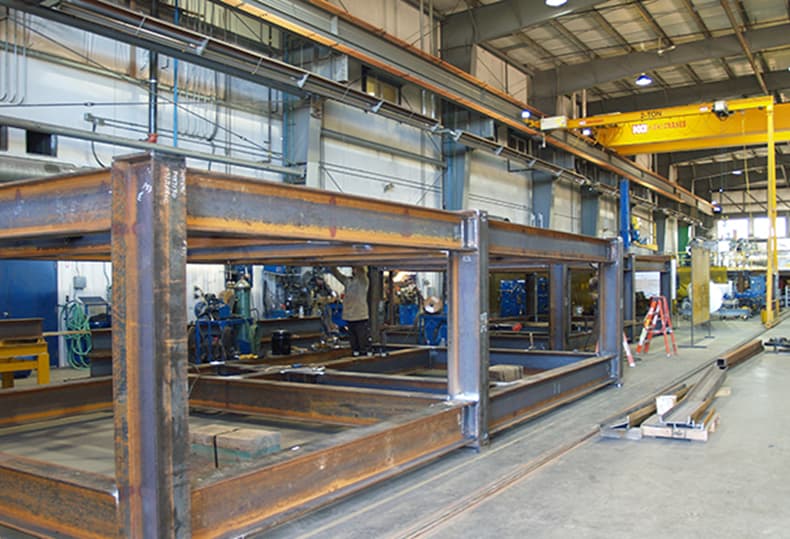
Typical stages of structural steel fabrication must be well known both by the vendors and consumers. Hence, visualization of the fabrication steps may increase the intelligibility of the process steps. The below flowchart is designed in accordance with the most common fabrication steps. It is worthwhile to note that the sequence of the process may differ for different applications.
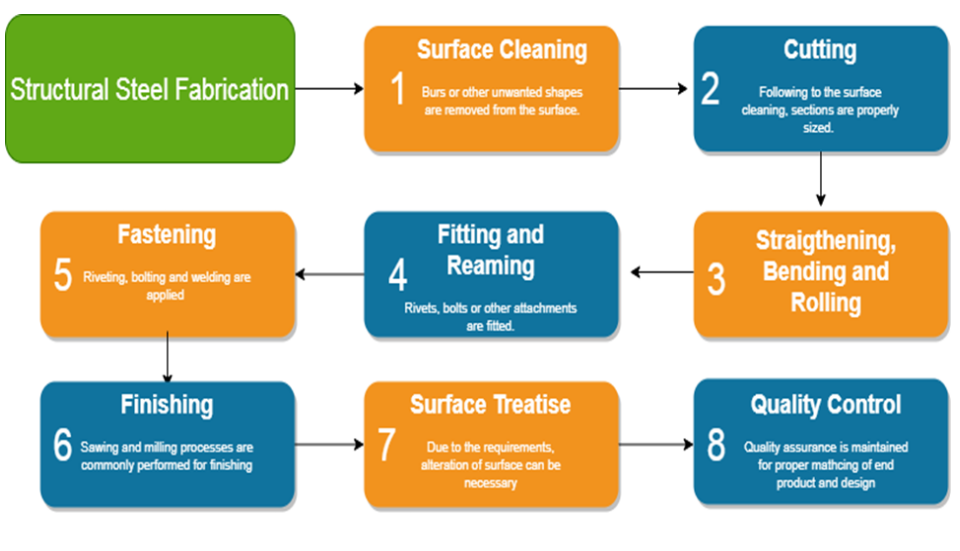
Surface Cleaning
Almost every application about the assembly of any material, especially steel, requires pre-cleaning steps for better results. For example, pre-cleaning of metal alloys before welding strongly influences the quality of welded parts. Removal of hydrocarbons and moisture on the surface enhances the strength of the weld seams and neighboring areas. Moreover, surface asperities must be removed before further processing since smooth surfaces are more desired than rough surfaces by means of joining operations. Blast cleaning, where abrasive particles are projected on the target surface, is an excellent way to ensure surface smoothness.
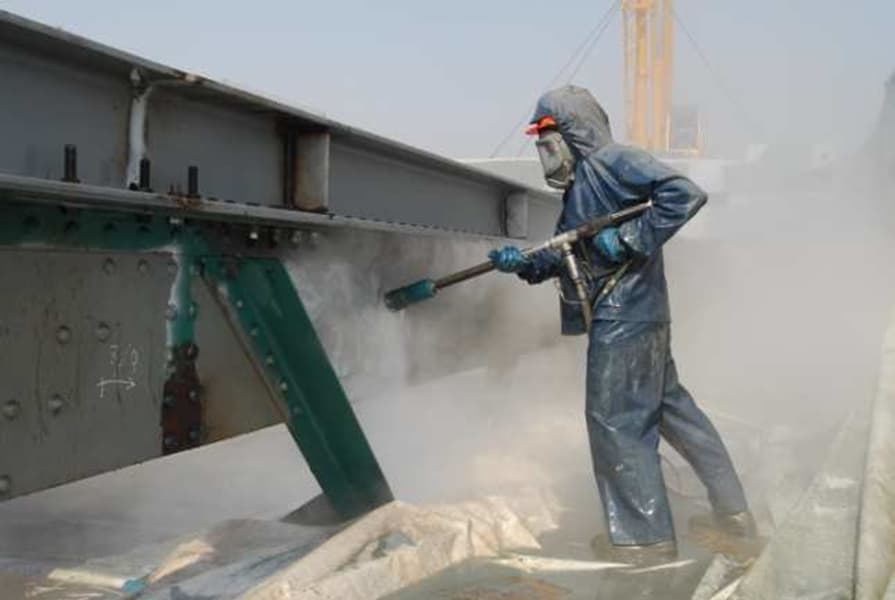
Cutting and Machining
One of the most vital and fundamental parts of structural steel fabrication is cutting and machining the sections according to the design parameters. Sizing operations must be carried out following the surface preparation stages. This can be done by using several methods. Each method has its advantages and disadvantages depending on the progress of the process and material type. However, a simplified version of the most common cutting techniques can be presented below schematic.

Shearing and Cropping: Due to the desired length and thickness values, light to medium sections can be cut using hydraulic shears. According to the planned size, several sizes of shearing knives are utilized.
Flame Cutting and Burning: The basic principle of this method relies on the local heating of metal sections. A gas mixture that contains oxygen and propane is pressurized and blew through a small orifice where the mixture is combusted, and flame occurs. The heat resulted from the flame is focused on a small area on the steel (or metal section), and local melting of steel emerges. Cutting of the steel is maintained by combustion of the excessively pressurized oxygen mixture. The designed size of the sections is yielded by the flame cutting process, where local melting resulted in the separation of the steel into two or more pieces. This process is widely used for structural steel fabrication since it’s a highly rapid method. However, during the structural steel fabrication, the high speed and excessive temperature of the flame cutting process may require further steps. Most of the produced sections during the structural steel fabrication processes are heat-treated to relieve the induced internal stresses. If the structural steel fabrication process is not capable of further heat treaties, then the cooling stage of the cut sections must be slowed by the vendor to prevent residual stresses and distortions.
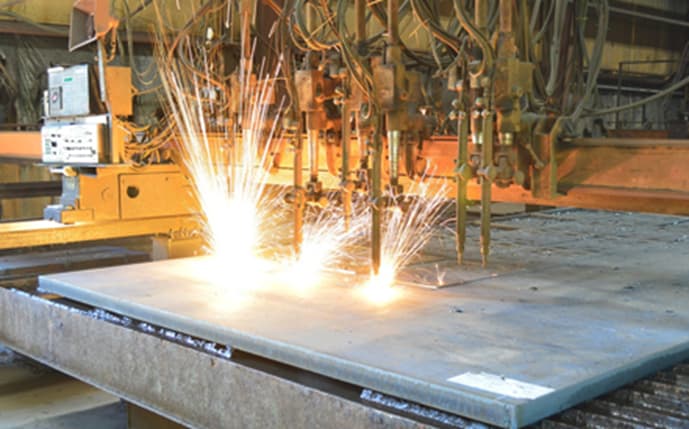
Arc Plasma Cutting: Both arc plasma cutting and flame cutting methods rely on the same principle, which is the melting of the base material. However, the route of melting is different in the plasma arc method when compared with the flame cutting technique. The energy required for the melting of the steel section is sourced for a gas plasma that emerges between anode and cathodes. An electric arc is produced between a tungsten electrode and the parent metal. When electricity is flown from the tungsten electrode to the workpiece, the resulting electric arc creates a high-energy plasma environment. This plasma jet melts the metal and finalizes the cutting process. The cuts resulted in the plasma process possesses a high quality, enhancing the quality of the cuts can be ensured by using water injection supported plasma torches.
Cold Sawing: If the desired size of the designed part cannot be yielded by shearing operations, a primary sawing method may be helpful. Common saws for structural steel fabrication are aided by computer controllers. The traditional saws for structural steel fabrication operations can be divided into three main groups, which are; circular, band, and hack saws.
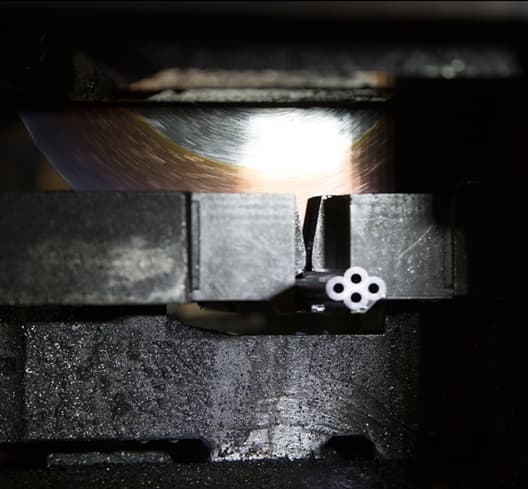
Sizing of the sections is vital, but machining operations must also be carried on to have the desired shape. Thus, structural steel fabrication processes densely use machines for hole drilling. Traditional drilling operations mainly utilize radial drills which are directed manually. However, for modern structural steel fabrication, the speed of the radial drills is not adequate. Hence, most of the structural steel fabrication stages govern numerical controlled tools for drilling. These NC (numerical controlled) tools drill the structural steels according to the provided data. Moreover, by using NC tools, punching operations may also be carried on, desired for most of the structural steel fabrication stages.
Straightening, Bending, and Rolling
Distortions may occur in the rolled steels during the cooling of the material in any process. Moreover, the transportation stages of the materials may cause undesired bends or distortions on the materials. Hence, before the structural steel fabrication, one must straighten the materials. Most commonly, gag presses are used for straightening operations. Gag presses utilize rams to the local bend points for ensuring alignment. However, due to the hot rolling past of the steels, cambers may emerge. The inhalation of the cambers is maintained by using rollers again. Successive rollers are operated, and the cambered part is conveyed through these rollers where the alignment is provided.
Reaming and Fitting
In structural steel fabrication, before the latter assembly stages, components of the designed parts are fitted using rivets and bolts. Furthermore, some small zones can be joint each other via welding applications. In some cases, the alignment of the holes of connecter parts may require increment in the order. Hence, reaming operations are maintained to provide the proper alignment of the orifices.

Fastening Techniques
The fastening methods strongly influence the mechanical endurance and strength of the whole body. Three standard fastening methods are utilized for structural steel fabrication. These methods are riveting, bolting, and welding. Most of the modern applications are solely use welding methods for fastening during structural steel fabrication operations. However, a few centuries later, popular fastening methods were riveting and bolting. The preference of welding for fastening has some solid reasons. Welding methods substantially decrease the size of the joint zone and the requirement for joining elements. Furthermore, the simplicity of the welding operations is a significant impact on vendors. Nonetheless, some modern applications still require riveting and bolting to hinder welding’s adverse effects on the parent metal. The use of the optimum fastening method varies on the designed process and material selection.

Finishing, Surface Treatment, and Quality Control
Structural steel members must bear the applied load, and the surface quality is a huge factor in the mechanical properties of sections. Hence, adequately finished surfaces must be ensured for finalizing the structural steel fabrication. Finishing is maintained by sawing and milling applications which generate accomplished sections. Primarily, carbide cutters are utilized for the finishing operations.
Another way of surface modification is known as surface heat treatments. Heat treatment operations may be solely used for surface hardening or softening processes. Furthermore, for alteration of the bulk sections, a total heating-cooling cycle is used, which promotes the mechanical properties of the whole body. The type of heat treatment method depends on the desired properties of the sections.
When structural steel fabrication is done, quality controls of connectors and bulk parts are conducted in accordance with the proper standards. The required standards of the sections may depend on the type of the material and the type of the elements. Proper assurance of quality ensures an alpha plus fabrication process.
YENA Engineering Structual Steel References:
- 430 Tons of Steel Trusses (Steel Frames) Fabricated in 20 Days!
- Structural Steel Truss Fabrication
- Structural Steel Fabrication
- Fabrication of Steel Pipe Supports – Handrails – Stairs
- Structural Steel Fabrication For Facade Application

